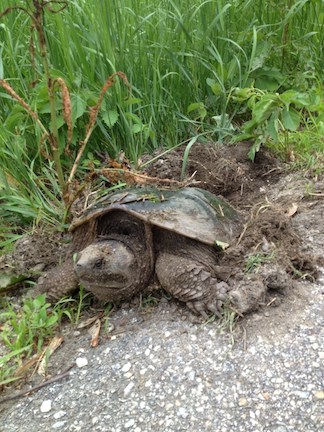
Photo by George Scribner, Vermont Fish & Wildlife
MONTPELIER, Vt. – Vermont’s turtles will be on the move this spring, and the Vermont Fish & Wildlife Department is asking for the public’s help in keeping them safe. Female turtles will be looking for places to deposit their eggs, sometimes choosing to lay them along the shoulders of roads, which can bring them into the path of motor vehicles.
“Turtles often move across roads as they search for a nest site,” said Luke Groff, biologist for the Vermont Fish & Wildlife Department. “They are usually slow-moving animals, so they have a tough time making it safely across the road. Turtles grow slowly and live a long time, so losing a mature breeding female may be a huge loss to the turtle population.”
Turtle nesting activity peaks between late May and early June, and drivers are urged to keep an eye out for turtles on the road – especially when driving near ponds and wetlands.
“When you spot a turtle in the road, you may be able to help it across. First be sure you’re in a safe spot to stop and get out of your car, as human safety comes first,” said Groff. “If you’re going to move a turtle off the road, always move it in the direction it was traveling. They know where they’re going.”
Most turtles can be picked up and carried across the road. However, if the turtle has no colorful lines, spots, or other markings, it is probably a snapping turtle, so people should stay back to avoid being bitten. Snapping turtles’ necks are long. Instead of picking up the snapper, try pushing the turtle across the road with a shovel.